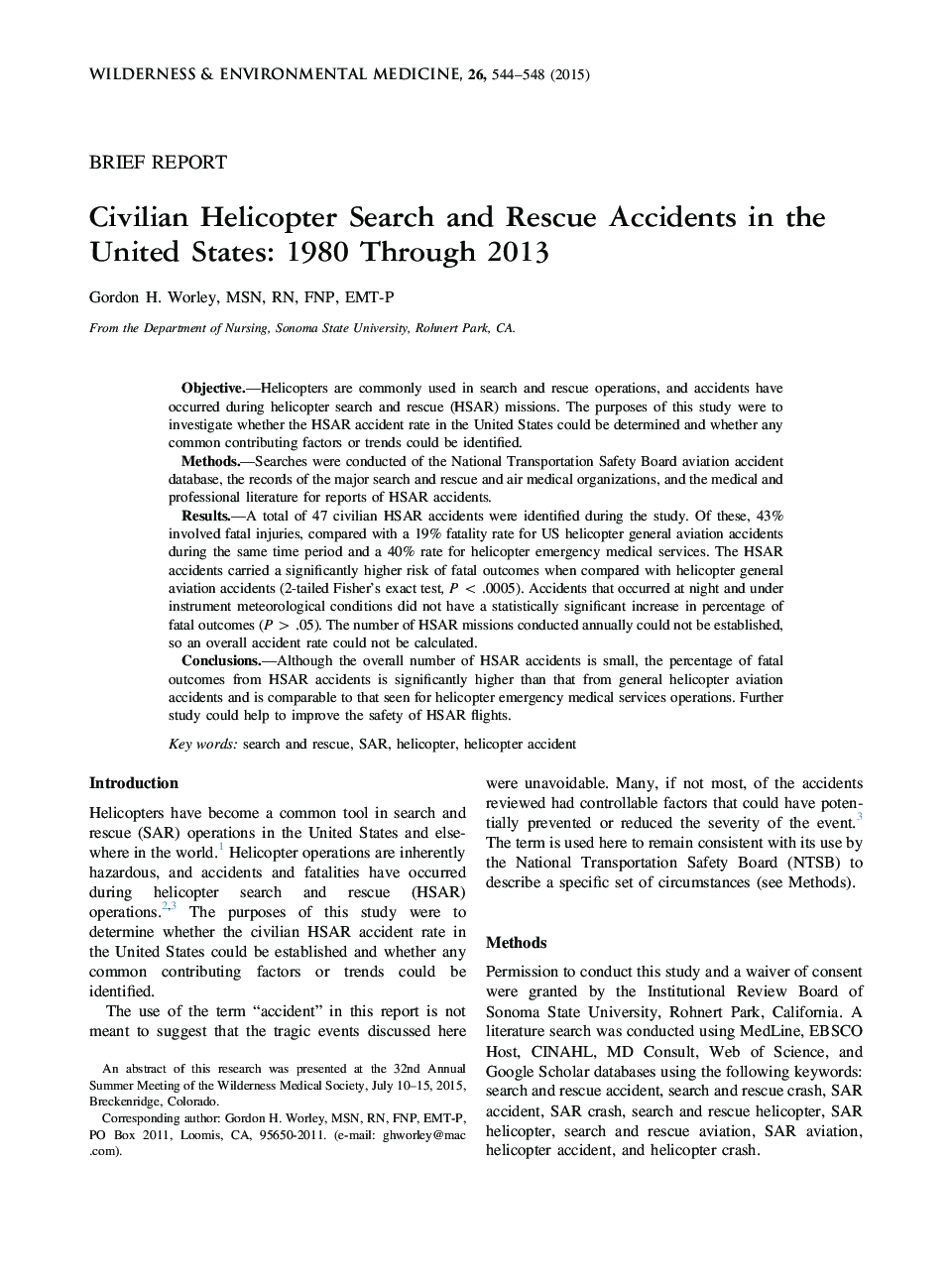| Article ID | Journal | Published Year | Pages | File Type |
|---|---|---|---|---|
| 2614201 | Wilderness & Environmental Medicine | 2015 | 5 Pages |
ObjectiveHelicopters are commonly used in search and rescue operations, and accidents have occurred during helicopter search and rescue (HSAR) missions. The purposes of this study were to investigate whether the HSAR accident rate in the United States could be determined and whether any common contributing factors or trends could be identified.MethodsSearches were conducted of the National Transportation Safety Board aviation accident database, the records of the major search and rescue and air medical organizations, and the medical and professional literature for reports of HSAR accidents.ResultsA total of 47 civilian HSAR accidents were identified during the study. Of these, 43% involved fatal injuries, compared with a 19% fatality rate for US helicopter general aviation accidents during the same time period and a 40% rate for helicopter emergency medical services. The HSAR accidents carried a significantly higher risk of fatal outcomes when compared with helicopter general aviation accidents (2-tailed Fisher’s exact test, P < .0005). Accidents that occurred at night and under instrument meteorological conditions did not have a statistically significant increase in percentage of fatal outcomes (P > .05). The number of HSAR missions conducted annually could not be established, so an overall accident rate could not be calculated.ConclusionsAlthough the overall number of HSAR accidents is small, the percentage of fatal outcomes from HSAR accidents is significantly higher than that from general helicopter aviation accidents and is comparable to that seen for helicopter emergency medical services operations. Further study could help to improve the safety of HSAR flights.
